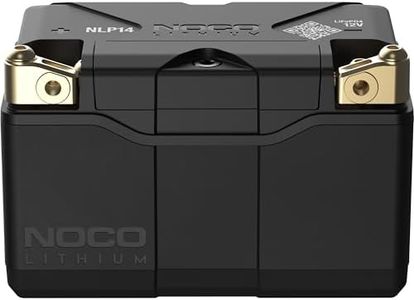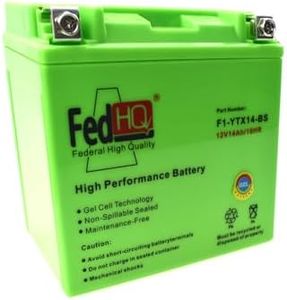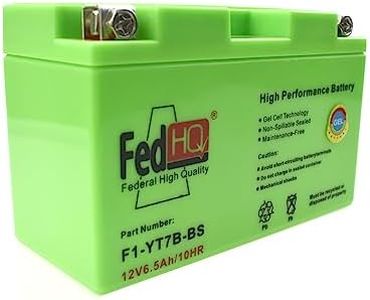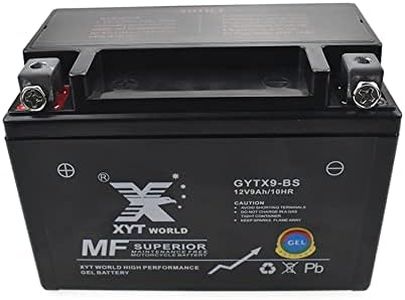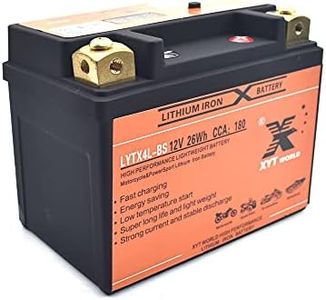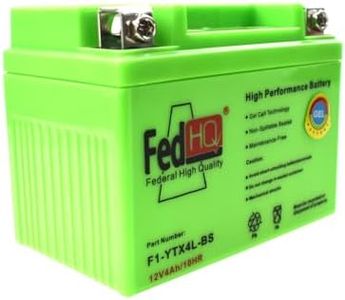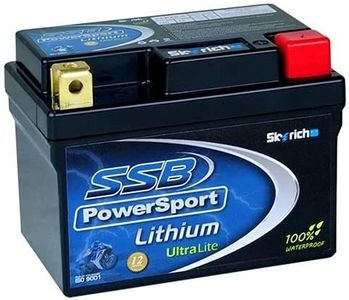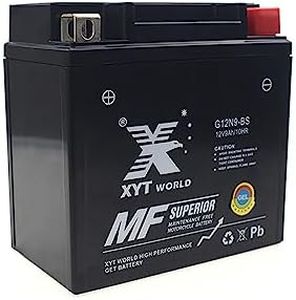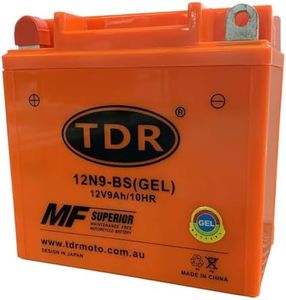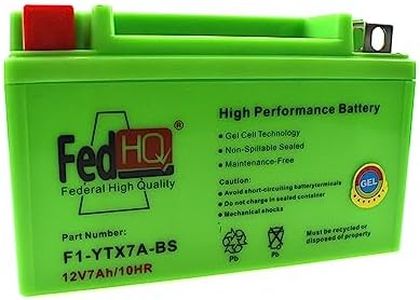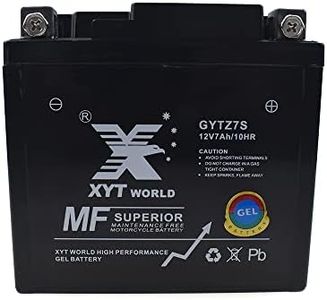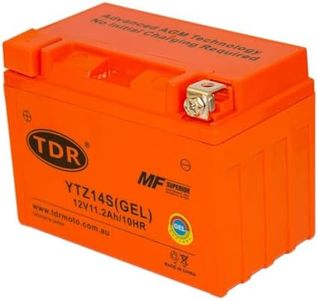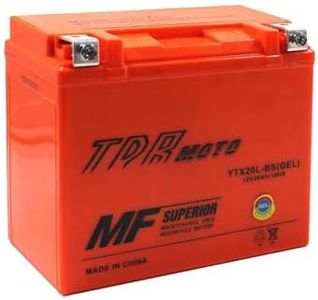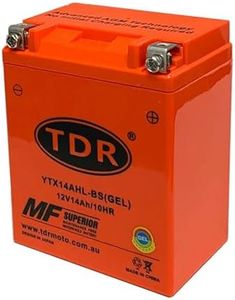We Use CookiesWe use cookies to enhance the security, performance,
functionality and for analytical and promotional activities. By continuing to browse this site you
are agreeing to our privacy policy
10 Best Atv Batteries
From leading brands and best sellers available on the web.Buying Guide for the Best Atv Batteries
Choosing the right ATV battery is crucial for reliable starts, consistent power delivery, and the long-term health of your vehicle's electrical system. A well-matched battery ensures your ATV runs smoothly, whether you use it for work, recreation, or off-road adventures. By understanding the key specifications and their relevance to your needs, you can confidently select the battery that keeps your ATV ready for action.Battery TypeThe battery type refers to the construction and technology of the battery, such as lead-acid (flooded), AGM (Absorbed Glass Mat), or lithium. The type is important because it affects durability, maintenance requirements, weight, and tolerance to vibration. Flooded lead-acid batteries are traditional, need occasional maintenance, and are heavier. AGM batteries are sealed, maintenance-free, more resistant to vibration, and hold a charge longer when not used. Lithium batteries are lightweight, have a longer lifespan, but can be more expensive and may require compatible charging systems. If you use your ATV in rough conditions or store it for extended periods, AGM or lithium might be more suitable, while traditional flooded types may suffice for occasional and light use.
Cold Cranking Amps (CCA)CCA measures how much current (in amps) the battery can deliver for 30 seconds at 0°F without dropping below a certain voltage. It is important because a higher CCA means the battery can provide more power to start your ATV in cold conditions. Batteries with lower CCA are fine for warm climates or if your ATV is easy to start, but if you often ride in cold weather, look for a battery with higher CCA to ensure reliable starting.
Capacity (Amp-Hours, Ah)The capacity, measured in amp-hours (Ah), indicates how much energy the battery can store and supply over time. A higher capacity means your battery can power accessories and electronics for longer before needing to be recharged. Small-capacity batteries are suitable for basic ATVs with minimal electrical demands, while higher-capacity batteries are better if your ATV has lighting, winches, or other accessories that draw power.
Physical Size and Terminal LayoutBatteries come in different sizes and with terminals in different positions. Size and terminal layout are important because the battery needs to fit securely in your ATV's battery compartment and connect easily to the wiring. Check your ATV manual for the correct size and be sure the terminal orientation matches your ATV’s cable setup. Choosing an incorrect size or terminal position can make installation difficult or even damage the battery or ATV.
Vibration ResistanceVibration resistance is a measure of how well the battery can withstand shocks and jolts from rough terrain. It's important because ATVs frequently traverse uneven surfaces, and a battery that isn't designed to handle vibration may fail prematurely. Sealed AGM and lithium batteries typically offer better vibration resistance compared to traditional flooded types. If you regularly ride on bumpy trails, prioritize a battery labeled as heavy-duty or designed for off-road use.
Maintenance RequirementsMaintenance involves the degree of care the battery needs to perform well and last longer. Lead-acid flooded batteries sometimes need water checks and refills, while AGM and lithium batteries are almost maintenance-free. If you want a hassle-free experience or might neglect regular checking, opt for a maintenance-free battery.
